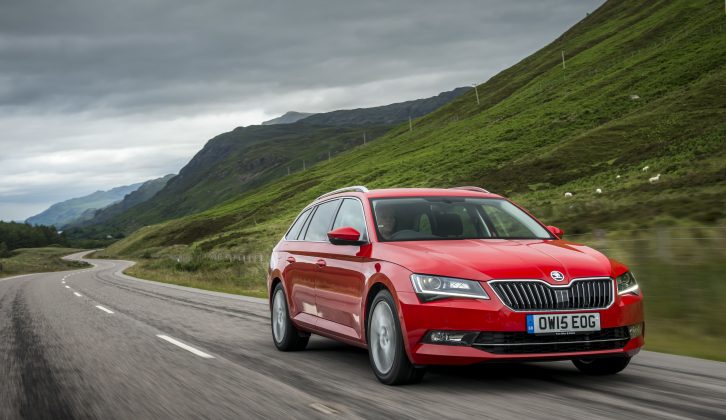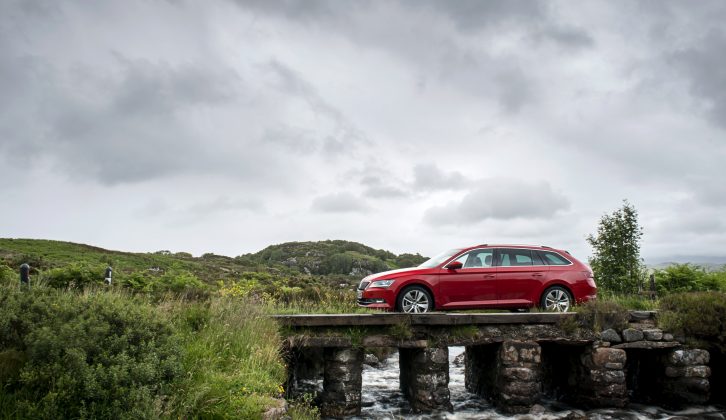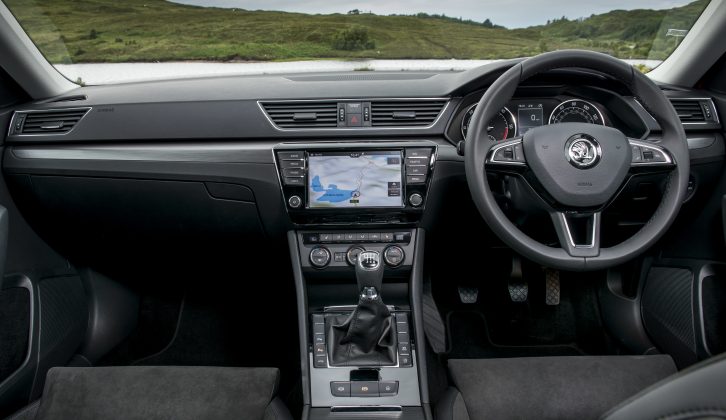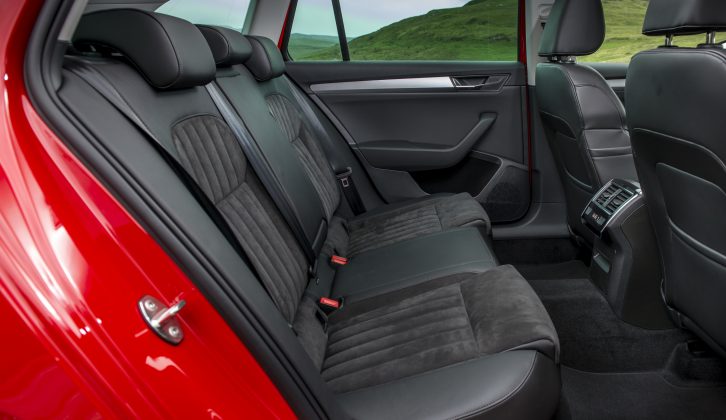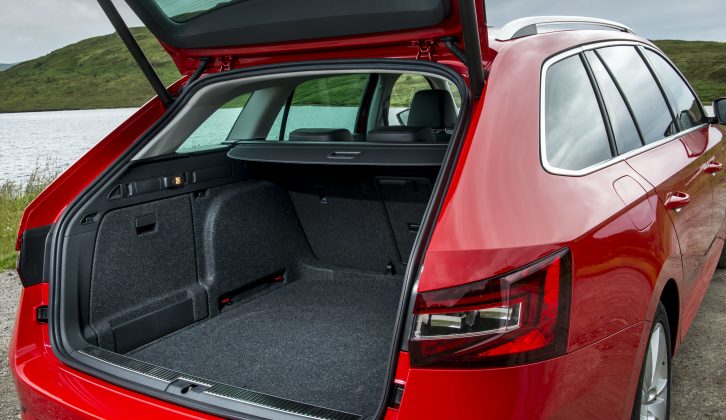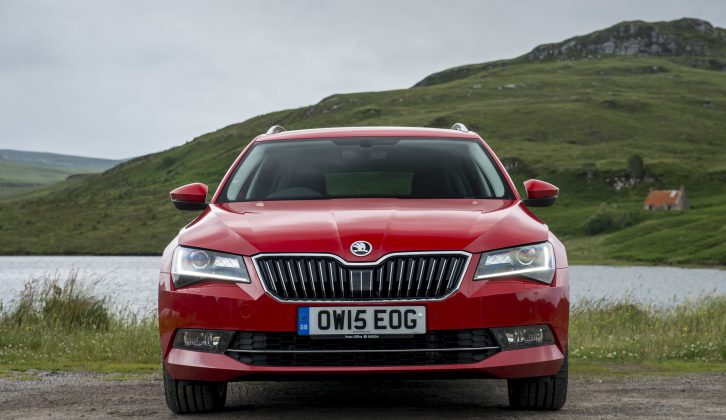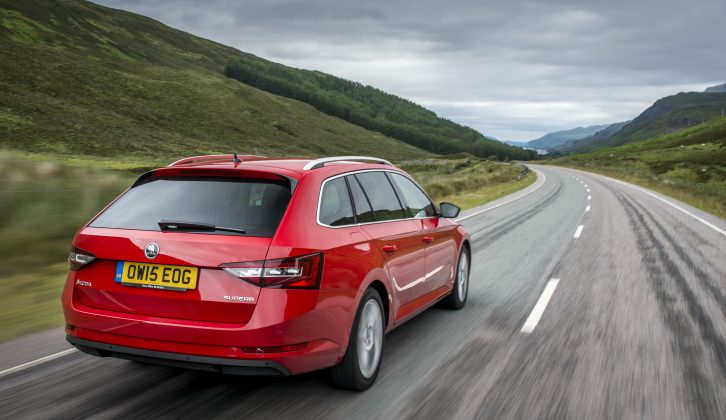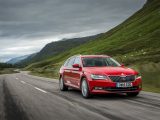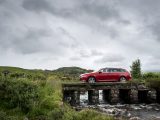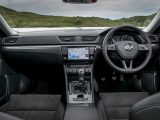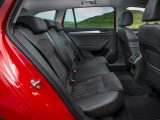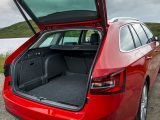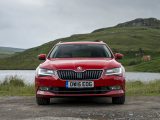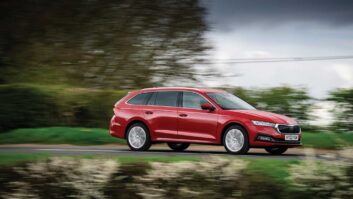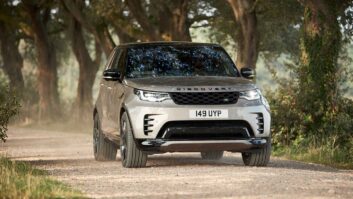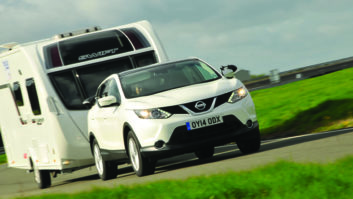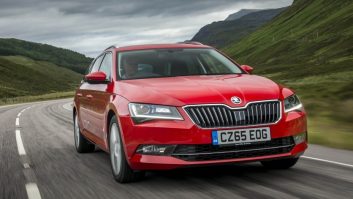The only thing that hasn’t changed on the new Škoda Superb is the first thing that I encountered: the legroom. Škoda thought it might be nice to chauffeur us from the airport to the hotel in the back of the new car, to remind us of one of the great qualities of the old one – that the amount of space in the rear is faintly ridiculous. It may not be as wide as a VW Passat (which is better at taking three booster-seats abreast), but there’s enough legroom and headroom for a 6ft 5in passenger to sit behind a 6ft 5in driver, in comfort.
Even from the back, however, you can tell one of the big advances of the new Superb, and that is refinement. Engine noise from the Volkswagen Group’s rather gruff 2.0-litre turbodiesel is much better suppressed, and suspension refinement is hugely improved. There is no rattling or crashing over bumps now, thanks to the combination of a 13% stiffer bodyshell and a new front subframe that better isolates the MacPherson strut front end from the road, plus a redeveloped multi-link rear axle. The ride feels much more supple, too, without sacrificing body control when you’re pressing on.
And therein lies another change. In the old car, you had to be content to enjoy the space and comfort rather than attempting to enjoy the drive, but this new Superb is, if not fun, at least genuinely rewarding to drive quickly cross-country. It looks great, too, previewing the sharp new Škoda family look – inspired, we’re told, by Czech cut crystal…
But what tow car potential does it have? We hope to find that out very soon, but the initial signs look promising. For a start, in a world where everything is becoming lighter there is some positive news for the caravanner after a towing heavyweight. Although Škoda proclaims weight savings of up to 75kg depending on model, at 1505kg the 2.0 TDI 150PS Estate that we drove in fact weighs 4kg more than our old 2.0 TDI 140PS Elegance long-termer.
It’s also nicer to drive when you’re not pushing it; the manual gearbox feels less notchy, and it no longer needs a bundle of revs to pull away without stalling. Once on the move it’s more refined, too, with engine noise kept to a distant drone, although there is still some road roar.
We chose to drive this version because it’s the volume-seller, and likely to be the choice of most caravanners. With that in mind, it’s good to hear that other weights are up as well: the towball limit is boosted by 10kg to 90kg, and the towing limit up by 200kg to a hefty 2000kg. If that’s not enough, or you want a bit more kerbweight to better match your caravan, you can always opt for the 190PS diesel and tick the option of four-wheel drive, which takes it to a 1635kg kerbweight and a 2200kg towing limit.
A quick blast in this model – equipped with a DSG twin-clutch automated manual – revealed that it feels exceptionally surefooted even on wet mountain roads, and has an awful lot more overtaking punch. Both of these should translate into more relaxing progress when towing; that said, use all of the power and it’s noisier than the 150PS model.
It was interesting to sample the new DCC suspension system in the 190, which offers several driving ‘modes’ including Eco, Comfort, Normal, Sport and Individual, the latter giving you the opportunity to set various features of the driveline to your liking. There’s a huge difference between Comfort and Sport – the former is soporific but gets rather wallowy off the motorway; the latter really sharpens things up, but to the detriment of ride quality. The majority of the time, however, we found that the standard set-up does a very decent fist of blending the best of all worlds.
Purely in the interest of research, we also had a go in the new 220PS turbo petrol – it’s easy to see why some might be seduced by it. The petrol has 10Nm more torque than the 150PS diesel (though at 350Nm it’s still some way off the 190PS at 400Nm), yet is also willing to be revved right out to 7000rpm with a fantastically rorty exhaust note. Do that, however, and you’ll really feel it at the pumps: driven enthusiastically on the same varied cross-country route it returned just under 30mpg to the 45mpg recorded by the 150PS diesel – which should get somewhere near its claimed 68.9mpg in the real world. So the petrol is likely to be a perfectly capable tow car (even more so in range-topping 280PS 4×4 form), but it may be hard to justify the expense.
Whether you go petrol or diesel, there are plenty of practical features that will please caravanners. The payloads are up by around 100kg, which means you can make the most of the simply vast boot – up 27 litres to 660 with the seats up, and up 85 litres to an epic 1950 when they are folded. There are two large storage bins and even a built-in removable torch, while a new option for the latest Superb is the ‘virtual pedal’ – which opens the boot automatically when you wave your foot beneath it!
Another new feature is the optional fold-away towbar, a first for Škoda, and tri-zone climate control, which means that passengers in the back are able to set their own temperature, as well as the driver and front passenger. Factor in the fact that CAP has given a used residuals figure of 48% after three years and it’s a pretty compelling package.
The old Škoda Superb managed to score four and a half out of five in our tow car test last year; on this evidence, the new car might even be troubling the full house.
The payloads are up by around 100kg, which means you can make the most of the simply vast boot
